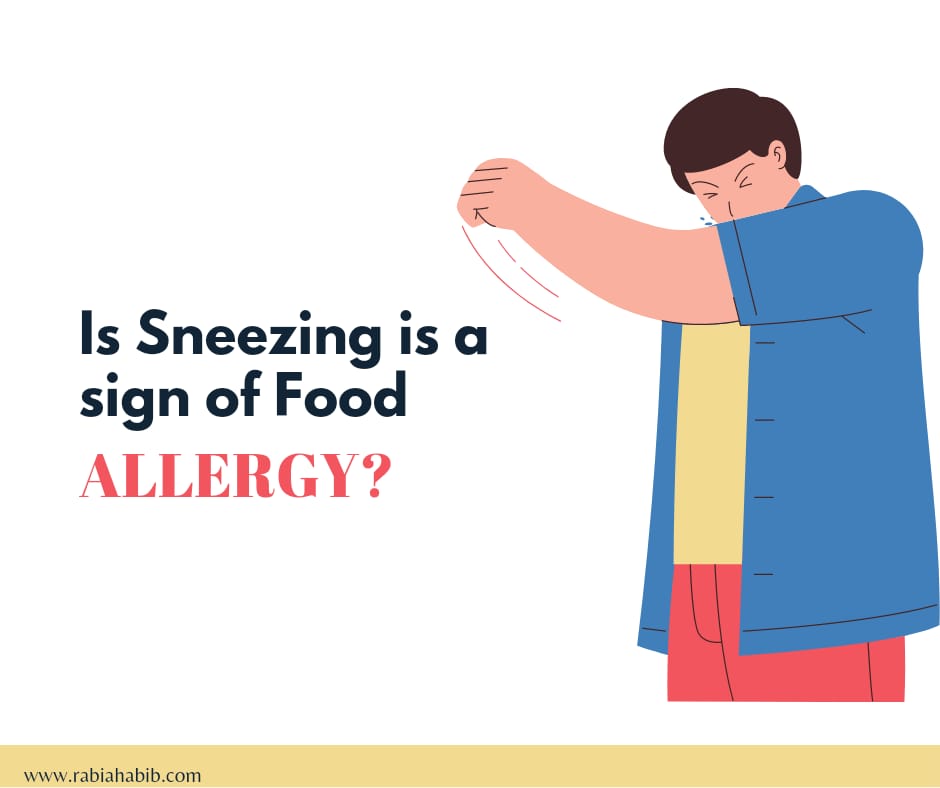Definition
Food intolerance is a “chemical reaction” that happens to some people after eating or drinking certain foods. The most common of all is lactose intolerance. According to an observation, about 15–20% of people are affected due to it.
Mainly, It is observed that food intolerances are more common than food allergies. Food preservatives, flavors, colors, and additives can cause food intolerance. All of these are naturally occurring organic chemicals in food. Food intolerance occurs not only due to natural chemicals. It is also due to artificial food substances that can harm sensitive people’s health.
There are some people whose body not grow to digest specific chemicals or enzymes like hereditary fructose intolerance. It is also related to the body’s inability to absorb nutrients, as in fructose malabsorption.
Symptoms of Food Intolerance
It is complicated to differentiate between symptoms of food allergy and food intolerance. Most of the time, food allergy symptoms disclose early when you consume food. Mostly its reaction depends upon the amount of food that is consumed.
Food intolerance is a common problem with people with low immunity to digest nutrients, chemicals, and specific enzymes. As a result, they develop particular symptoms that show that a person is allergic to something eaten just before. Further, their symptoms are;
- Nervousness
- Tremor
- Sweating
- Palpitations
- Rapid Breathing
- Headaches
- Migraine
- Diarrhea
- Burning sensation on the skin
- Tightness across the chest
Provoking Reactions of Food Intolerance
These shared symptoms may occur when the person eats a specific food level (threshold level). This particular amount and symptoms vary from person to person. A common and widely distributed naturally occurring food chemical capable of provoking reactions is salicylate, although tartrazine and benzoic acid are well-recognized in susceptible individuals. Benzoates and salicylate occur naturally in many foods, including fruits, juices, vegetables, spices, herbs, nuts, tea, and coffee.
Types of Food Intolerance
There are three different types of food intolerance. These types are classified based on digestion time and the ability of a person to digest it. Moreover, their types include;
- Lactose Intolerance
- Gluten Intolerance
- Fructose Intolerance
Lactose Intolerance
Lactose intolerance– also termed lactase deficiency. This kind of disease occurs due to less or zero ability of a child to produce lactase to digest a sufficient amount of lactose in milk or milk products.
Function of lactase
Moreover, this disorder has some functions. The primary part of lactase is the breakdown of lactose into glucose and galactose, so the bloodstream absorption process occurs. Without lactose, unchanged lactose ends up in the colon, where normal intestinal bacteria produce gas, causing gas and diarrhea. Only people with low lactase levels are considered lactose intolerant.
Symptoms of lactose Intolerance
All the symptoms of lactose intolerance pop up within 30 minutes. Sometimes, it takes 2hrs to appear after consuming a lactose-containing food. Moreover, their symptoms include,
Gluten Intolerance
Gluten intolerance– also known as celiac disease, occurs due to a person’s low or zero ability to digest gluten in wheat, rice, and barley. It is an inherited state that can cause serious physical issues. To say wheat allergy with the term gluten would never be false. Further, their symptoms are;
Symptoms of Gluten Intolerance
- Constipation
- Abdominal pain
- Diarrhea
- Bloating
- Fatigue
- Joint pain
- Weight loss
Effects of Gluten Intolerance
Further, there are some effects of this disease;
- Damage to the small intestine
- Reduce absorption of vitamins & minerals.
- No definable cure has still been found, can be fatal.
Prevention
Moreover, this disorder has some preventions too;
- Avoid food that contains gluten
- Use market low-gluten or gluten-free products
- For early diagnosis, put the patient on an elimination diet
Test to diagnose
Moreover, this disorder has some tests too;
- A patient’s blood test determines antibodies, AGA, EMA, and anti-tTG.
- Stool test that determines malabsorption level.
Fructose Intolerance
A type of food intolerance that is caused due to deficiency of an enzyme in the body. Initially, misdiagnosed as Irritable Bowel Syndrome (IBS).
Effects of Fructose Intolerance
Moreover, this disorder has some effects too;
- Improper working of the digestive system due to toxicity.
- Damage to the liver & kidneys
- It can be fatal, so you must take a fructose-free diet for the rest of your life.
What is the Malabsorption of Fructose
This is another form of fructose intolerance. However, this syndrome is less fatal than fructose intolerance but is still unable to utilize fructose. Although, this syndrome requires a complete dietary modification to survive.
Diagnostic Tests for Food Intolerance
There are some tests done to differentiate between food allergy and food intolerance. Based on symptoms, two tests introduce to identify the correct and original disorder. Further, their tests are the following;
Hydrogen Breath Test
These tests are processed to diagnose lactose intolerance. This test takes 3 hours to complete. For this, the patient must drink a cup containing a fructose mixture. After some time, the patient has to blow into a breath analyzer that tests the fluctuations in H2 level. This test also repeats several times during the whole examination.
Fructose Intolerance Test
Moreover, this test is similar to a hydrogen breath test currently used for clinical diagnosis. A stool test does if the breath test is not preferable.
Can you develop Sudden Food Intolerance?
YES, you can. This mainly happens to aged people because they develop a weak immune system with an increase in age. Just because of low immunity, they get food intolerance symptoms if they eat meals like grilled fish.
Can you develop Food Intolerance later in life?
Food intolerance symptoms mostly show in aged people due to low immunity levels. Then, if you say this is a game between low and robust immunity, it would never be false.
Is Food allergy known as Food Intolerance?
Food allergy is an unfavorable immune response to a specific protein they are allergic to and has viable symptoms like swelling on the lips, face and itching. On the other hand, food intolerance can’t categorize as an immune system response. Food allergy and food intolerance are equally important. Further, you can not call it Food Poisoning.

Call 999 if you Feel
- A skin rash or itching, peeling skin, red skin
- Swelling on face
- Tightness in chest
- Trouble breathing Tounge,
- Mouth and skin swelling
Sources
UK/conditions/lactose-intolerance/
icalnewstoday.com/articles/312898
icalnewstoday.com/articles/148373
dicalnewstoday.com/articles/73936.php
https://rabiahabib.com/sweetenersblog/
https://rabiahabib.com/food-allergyblog/

One thought on “Food Intolerance & its 3 Types- Is it sensitive?”
Excellent you are really amazing , authentic and researchable work you have done. Keep blogging and content writing.Best wishes for you.